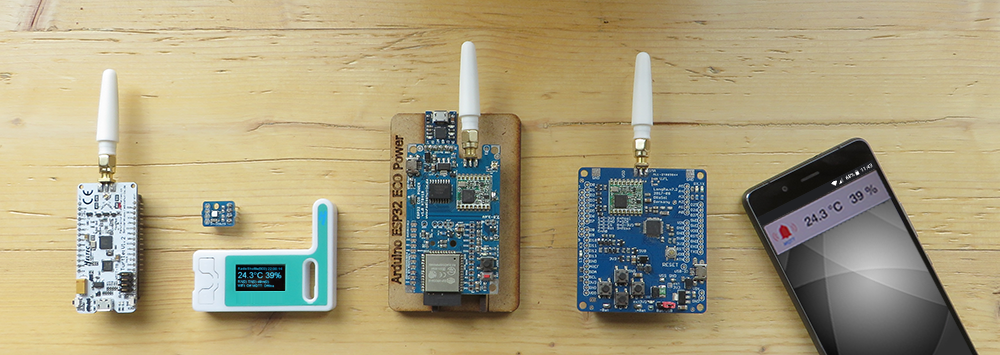Anregungen, Kritik und Fragen rund um das Thema „RadioShuttle“ sowie den Beispielprogrammen können gerne hier diskutiert werden.
5 thoughts on “Diskussion zu RadioShuttle”
Schreiben Sie einen Kommentar
Sie müssen angemeldet sein, um einen Kommentar abzugeben.

How can i set up multibple turtle boards with a eagle board as station?
I want to send signals from one node to the station and use the abillity of the mesh network for extending the range with multiple nodes if the node is to far away. Do i have to set up the remote id and where, on the station, on the node or both? And if on the station, do i enter all node id’s?
And enother thing, i want to make some range test, but the nodes are going into deep sleep after a couple of minutes, even if they set as online-node. Can i disable this?
Since the eagle board should stay indoors, for better range i would put one node on the rooftop and that node should relay the signals to the eagle board station. Does this work out of the box or do i have to setup anything for that?
Grüße aus dem Landkreis Lüneburg 😉
Another question. Is the Node-checking mode useable? This sounds like a good option for battery driven range extenders. I would only need to send some signals once a day. So the rest of the day the node could deep sleep.
At present the node checking mode is not available, it is scheduled long term for the Turtle Boards (not the ESP32 Eagle/ECO boards).
Mesh or relying is not supported by the RadioShuttle protocol and goes against the idea of LoRa communication. Relaying can be done manually by writing a simple app which forwards received messages to other known node ID’s. However this is not recommended.
Your idea: Sensor-node >> relay-node >> relay-node >> server.
In your example you keep 3 radio zones busy with traffic, with a high spreading factor a messages can easily take 2-3 seconds, in your example you keep the ISM Band 868 MHz busy for about 10 seconds, which is not good.
For the ISM band it is only permitted by a single node/server to have a bandwidth utilization of 1% per hour (3600 / 100 = 36 seconds per hour). Assuming a message need needs 3 secs this would restrict you to 12 messages per hour.
For most cases it makes sense to keep the SF7 mode where messages need about 0.25 seconds which allows 144 messages per hour.
Here comes my use case for a Eagele-Board with LoRa:
I want to read the energy consumption in our house. In germany (where we leave) the good old ferrari counters are replaced with new digital electricity meters. This meters have a IR interface with some specific protocol (sml).
BUT: This meters are placed somewhere in the house, where WiFi is not available (cellar, roof) or in metal cabinets where RF does not come through. Another use case: a friend is living in a neighbourhood, where the meters of all houses are located in a room 100m from its own house.
Therefore I would give LoRa a chance.
My idea:
electricity meters with IR sender -> IR diode head (up to four heads) -> one Eagle-Board for SML decoding (with RadioShuttle-SW, as sender) -> LoRa_TX ~~~ LoRa_RX (one Eagle-Board with RadioShuttle-SW as receiver) -> MQTT
AFAIK SML decoding is not available with RadioShuttle. I would appreciate any effort for supporting and decoding SML with RadioShuttle.
This is a good idea, SML decoding must be developed, maybe there is a SLM code available from somewhere in the Internet.